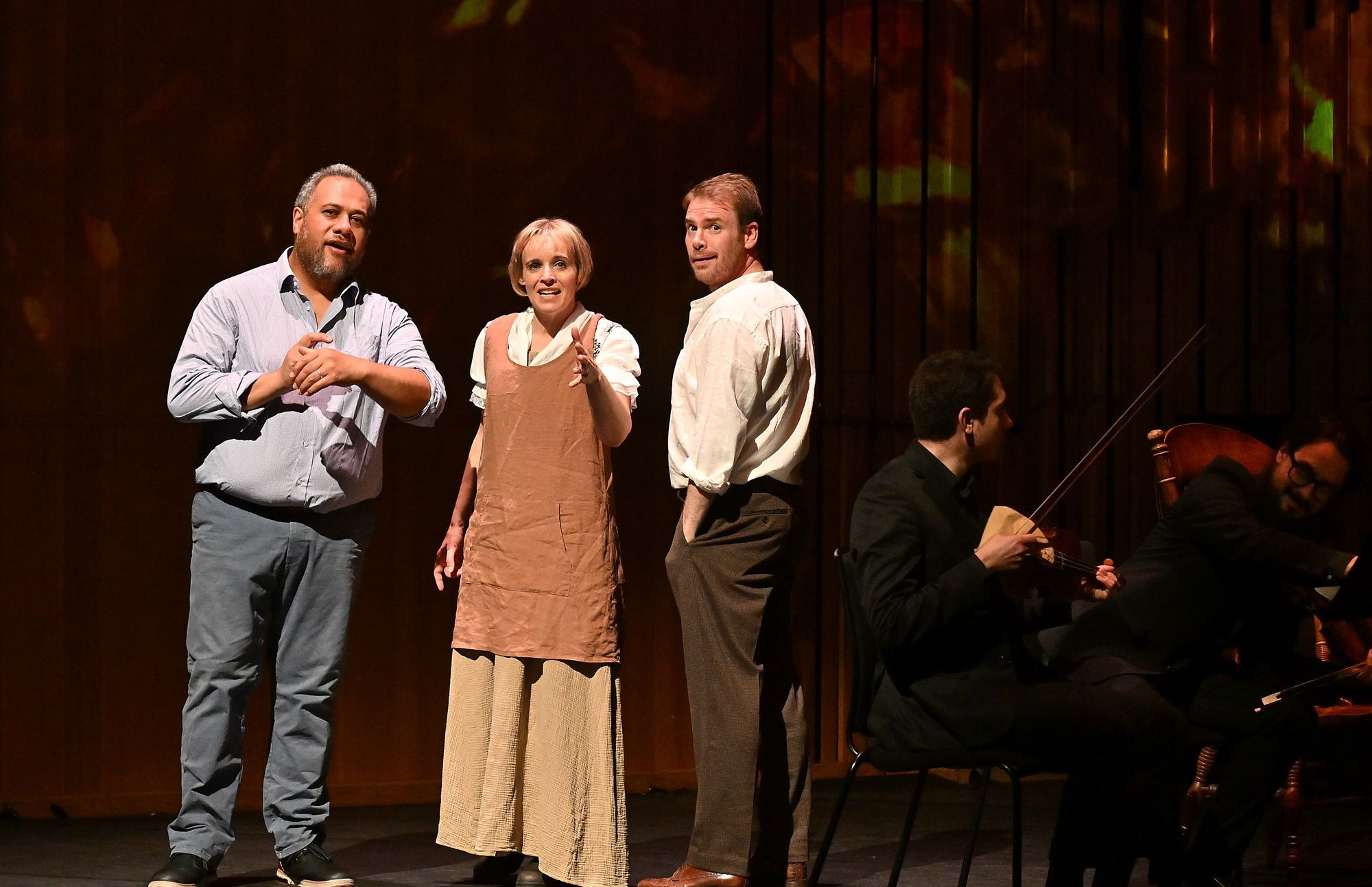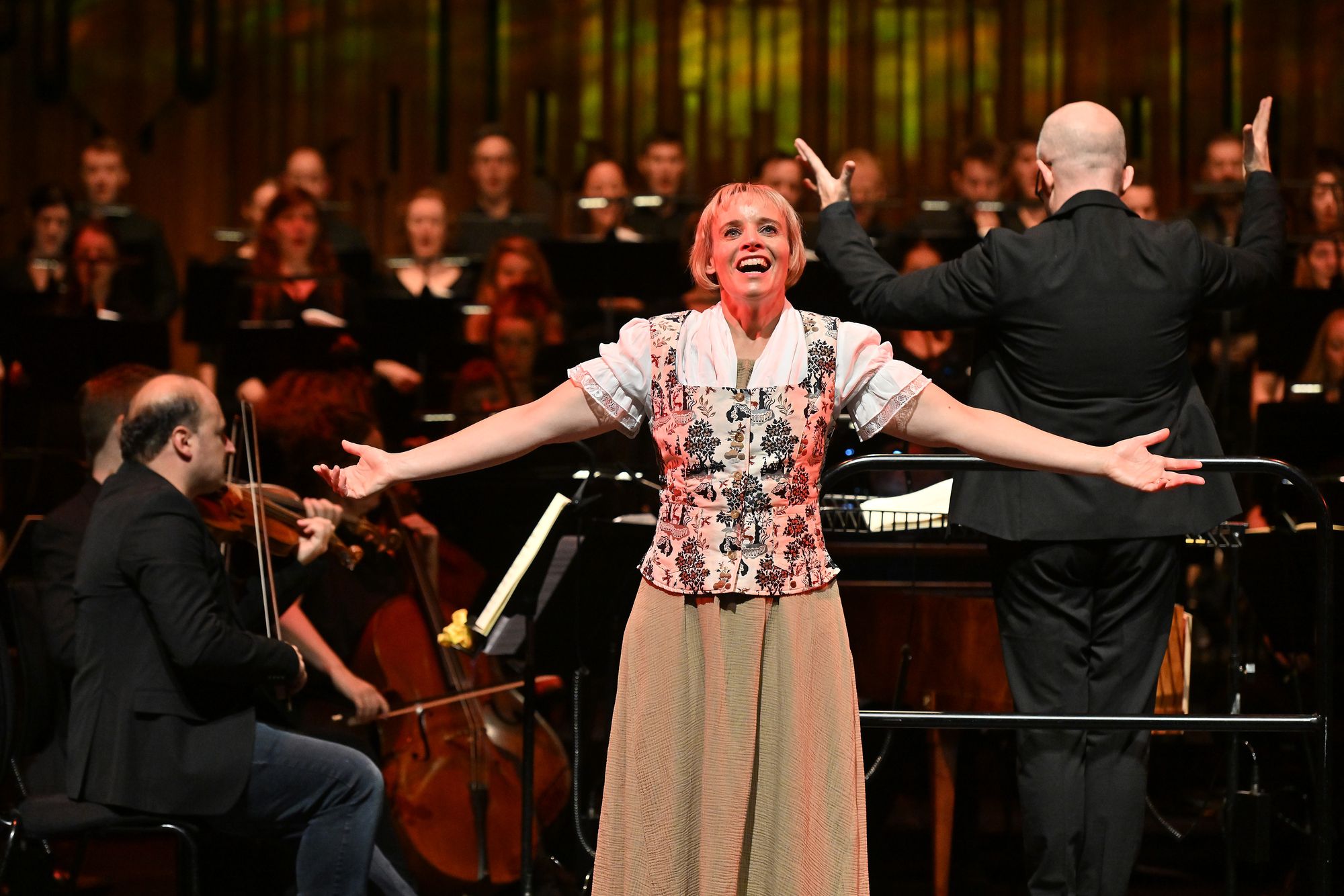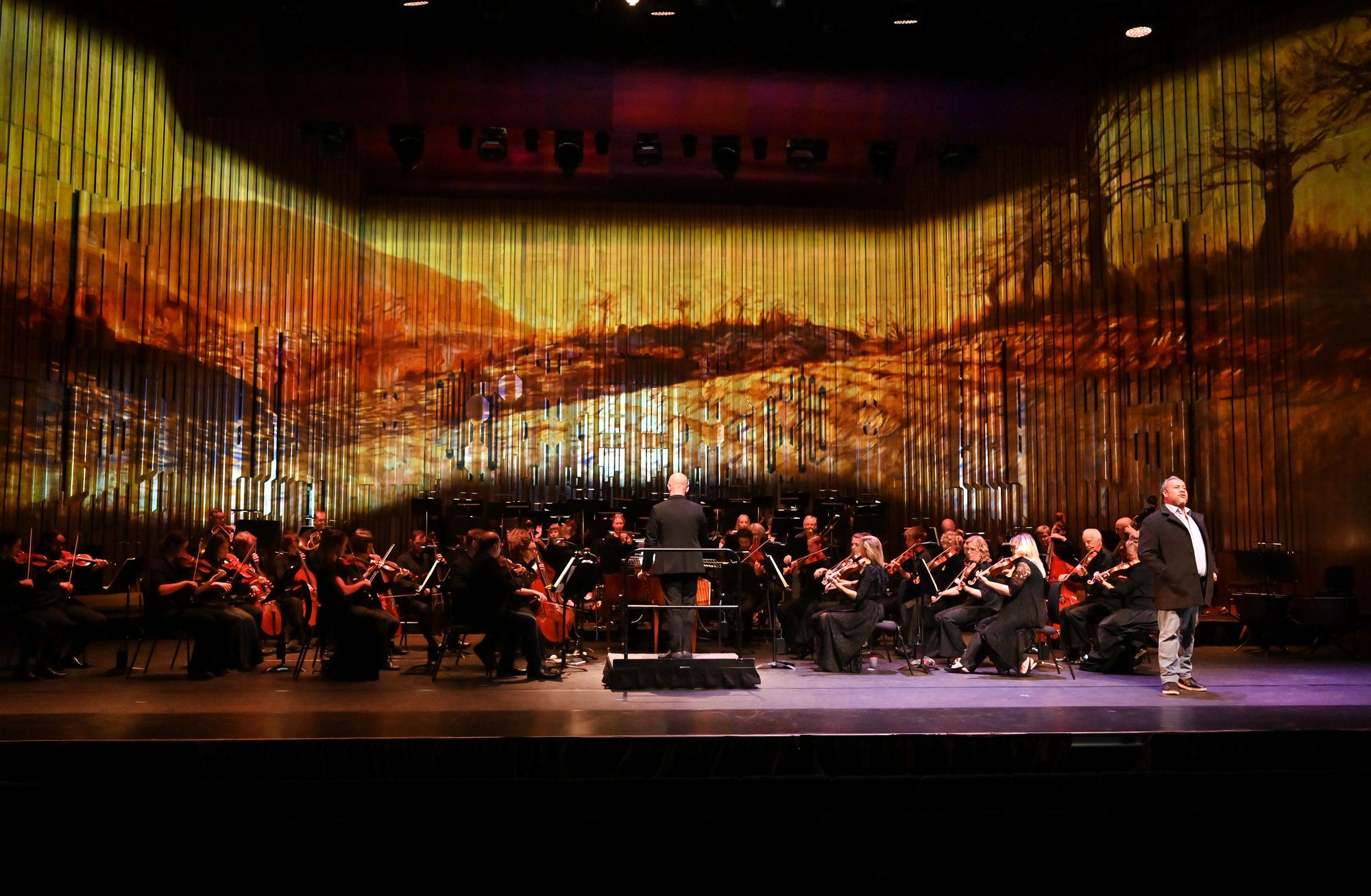Haydn's "The Seasons" at the Barbican

Haydn The Seasons, Hob. XXI:3 (sung in English, translation McCreesh). Rachel Nichols (soprano, Hannah); Benjamin Hulett (tenor, Lucas); Jonathan Lemalu (bass, Simon); Nina Dunn Studio (video & projection design); Martin Parr (staging director); The Academy of Ancient Music Chorus and Orchestra / Laurence Cummings. Barbican Centre,, London, 4.10.2022
While Haydn’s Creation is ingrained in our musical consciousness, not least via a multitude of choral society performances, The Seasons receives much less attention. Unjustifiably so, as a performance at St John’s, Smith Square in 2016 hinted; and as this one under Laurence Cummings confirmed; record collectors might well cherish Colin Davis’ July 1967 recording (now on Phillips Duo) with Heather Harper, Ryland Davis and John Shirley-Quirk and the BBC Symphony Chorus and Orchestra.
The piece is beautifully proportioned, with the orchestral exposition (superbly presented here under Cummings) tracking the transition of Winter into Spring, its drama underlined by the thwacks on timpani; projections (from the Nina Dunn Studio, now known apparently as PixelLuxe) perfectly judged. The video element certainly added atmosphere, with its rolling panoramas (they tended to move during recitatives), its ‘starry night’ for Autumn. Matching this was appropriate costumes (most obviously in the coats for Haydn’s rather chilly Winter). The piece is Haydn’s hymn to Nature, and it was impossible not to feel immersed in this procession of four clearly differentiated seasons.
Fascinating how Summer is seen as both a blossoming (the fabulous chorus, ‘Hail, O glorious sin!’), but also a season with a negative side, of drought and storm. So, it is the section opens in darkness, with an oboe piercing through the gloom, until Hannah (Nichols) announces daybreak (‘The rosy dawn breaks forth at last’). Autumn, which concentrates on pastoral activities, culminates in a rousing Drinking Chorus of great jubilation here (‘Drink up, drink up, the wine is here!’ … ‘Let us drink now!’). Winter gives us a wanderer in the snow (Haydn’s Winterreise, then) who finds shelter in a village where the girls are spinning hence a Spinning Chorus) - there is a clear trajectory from the bleakness of the opening to the final Double Chorus with Solos, ‘The dawns that morn so glorious’ which elevates us to the House of God and a vision of the ‘Holy Mount’.
This particular Barbican performance is part of the AAM’s 2022/23 season, entitled ‘Tis Nature’s Voice: further performances include Les Elémens at Milton Court on November 10 and, among others, and culminating in a performance of Beethoven’s ‘Pastoral’ Symphony at teh Barbican Hallin late June, 2023.
Before we get to the soloists, praise should be heaped on the Academy of Ancient Music (chorus and orchestra), perhaps particularly the hunting (natural horn) for negotiating their invocations supremely well; and also for the use of a fortepiano (Alastair Ross), centrally placed and facing the conductor, in recitatives and elsewhere. This choice ’placed’ the music beautifully. The Chorus, too, was impeccably drilled, particularly in the post-Handelian fugal passages. Cummings’ understanding of Haydn’s score is complete, his tempos beautifully chosen; it is a long evening (although not quite the 1015 pm finish time advertised), but Haydn’s music shines brightly, its invention unflagging.
And while some (myself included) might have felt disappointed in Sophie Bevan’s indisposition due to ill-health, Rachel Nicholls, stepping in a short notice, Reading Nicholls’ biography, one could be forgiven for thinking her unsuitable for this work” there is much emphasis on Wagner (she has sung Isolde, Senta and she will essay Brünnhilde). She also takes in contemporary music, as in Nicola LeFanu’s The Crimson Bird; but her performance of earlier music shines. She clearly loves this piece, and her voice suits it well: what a gorgeous melody, for example, Haydn finds for the Duet with Chorus ‘O what charming sights delight us in the prospect fair’ in Spring. That ‘The rosy dawn breaks forth at last’ in Summer was simply beautiful, confident and light of voice.

The tenor, Benjamin Hulett, was capable of the most lovely grazioso (as in the chorus with solos, ‘Heav’n be gracious’; this section also demonstrated just how perfectly the three soloists blended. He looks the part, too, young and fervent, and interactions between Lucas and Hannah were a delight. Worth noting that Hulett has a good low range (Haydn does not stick to the rules of voice ranges when it comes to the tenor!).
Jonathan Lemalu, who sang Simon at a 2007 Prom performance under Sir Roger Norrington, is clearly immersed in this music, and whatever the strengths of his co-soloists, it was his star that shone the brightest as this music is so clearly in his blood. Throughout it was his commanding strength of voice that impressed, its beauty, and his sense of style. You can see one ofthe projections, also, in this photo:

And here is that 2007 Proms performance complete:
The Barbican performance was a supreme affirmation of Haydn’s masterpiece; a most memorable evening.
The performance by Colin Davis on Phillips is available on Amazon as an MP3 download here. His later perfomance, with the LSO, can be purchased via the link below:
